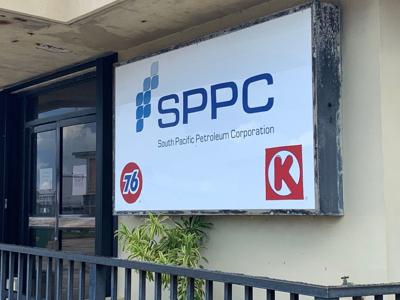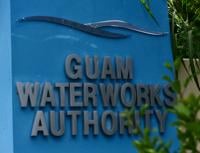The U.S. Environmental Protection Agency announced a settlement with South Pacific Petroleum Corporation Inc., SPPC, over claims of violations of the Clean Water Act when the company was found earlier this year to have inadequate treatment and excess oily water leaving its Piti facility and flowing into Apra Harbor.
Under the terms of the settlement, SPPC will take actions to improve operations and maintenance at its petroleum storage facility, the USEPA said.
The federal agency said its order helps prevent future oil spills and protect Guam water resources.
SPPC, in a Thursday statement following the Pacific Daily News’ request for comment, said it takes its environmental responsibilities seriously and have cooperated fully with the USEPA throughout this process.
“Our top priority is to operate responsibly and ensure we meet the highest standards for environmental protection,” SPPC chief executive officer Bob Koeppen said in a statement. “We are committed to making the necessary improvements at our Cabras Terminal facility and will continue to collaborate with regulators and the community to safeguard Guam’s waters.”
The SPPC Cabras Island Terminal is a bulk petroleum storage and wholesale distribution facility that receives, stores, and distributes gasoline, diesel, and jet fuel.
SPPC operates 76 gas stations and Circle K convenience stores.
The US EPA, in a release, said the SPPC Cabras Island Terminal is authorized to discharge treated oily wastewater and stormwater under a National Pollutant Discharge Elimination System permit.
However, a February 2025 on-site inspection by an EPA inspector found that the SPPC “had not properly operated and maintained treatment units, which led to inadequate treatment and excess oily wastewater leaving the facility and flowing into Apra Harbor.”
“Under the Clean Water Act, oily wastewater cannot go in island waterways. Guam’s waters must be protected,” USEPA Pacific Southwest Regional Administrator Josh F.W. Cook said in a May 27 statement. “This Order will stop contamination from reaching Guam’s coastal waters used for recreation and fishing. As the U.S. expands our national defense in the Pacific, Guam environmental issues will be at the top of the list.”
SPPC: Steps being taken
SPPC said the issues identified during the February 2025 inspection have been addressed with urgency and transparency, and the company is committed to completing all required actions under the settlement agreement.
The company said it will continue to work closely with regulatory agencies to ensure full compliance with the Clean Water Act and all applicable environmental standards.
“We deeply value the trust placed in us by the people of Guam and recognize the importance of protecting the islands’ coastal waters,” Koeppen added. “The continued operation of our facility is critical to fuel supply reliability in the region, and we remain committed to doing so in a safe, responsible, and environmentally sound manner.”
SPPC said it appreciates the USEPA’s partnership and oversight and will continue to uphold their commitment to environmental stewardship through continuous improvement and proactive compliance initiatives.
The USEPA said under the order, SPPC has agreed to:
• Complete maintenance to remove oily waste and materials within the oil water separators and the oily waste storage area, and ensure materials are properly disposed.
• Complete maintenance to ensure oil water separator treatment systems are functioning properly.
• Clean the trench drains surrounding the loading rack area and ensure materials are properly disposed.
• Clean all spills within the loading rack area.
• Minimize any potential spillage for all liquid storage tanks within the loading rack area.
• Update the facility’s Pollution Prevention Plan to address the noncompliance, including a cleaning schedule to remove oily waste and debris from the oil water separators at least once per year.
• Develop a Capital Improvement Project plan to upgrade, repair, and/or replace all corroded, damaged, and leaking equipment within the loading rack area, including pipes, pumps, fuel lines, switches, valves, and other components which have the potential to cause spills.
The USEPA said SPPC will be able to continue daily operations at the facility as it carries out the Order.
The National Pollution Discharge Elimination System permit program, created in 1972 by the Clean Water Act, helps address water pollution by regulating sources that discharge pollutants to waters of the United States.












(1) comment
shut them down, hefty fine.
Welcome to the discussion.
Log In
Keep it Clean. Please avoid obscene, vulgar, lewd, racist or sexually-oriented language.
PLEASE TURN OFF YOUR CAPS LOCK.
Don't Threaten. Threats of harming another person will not be tolerated.
Be Truthful. Don't knowingly lie about anyone or anything.
Be Nice. No racism, sexism or any sort of -ism that is degrading to another person.
Be Proactive. Use the 'Report' link on each comment to let us know of abusive posts.
Share with Us. We'd love to hear eyewitness accounts, the history behind an article.